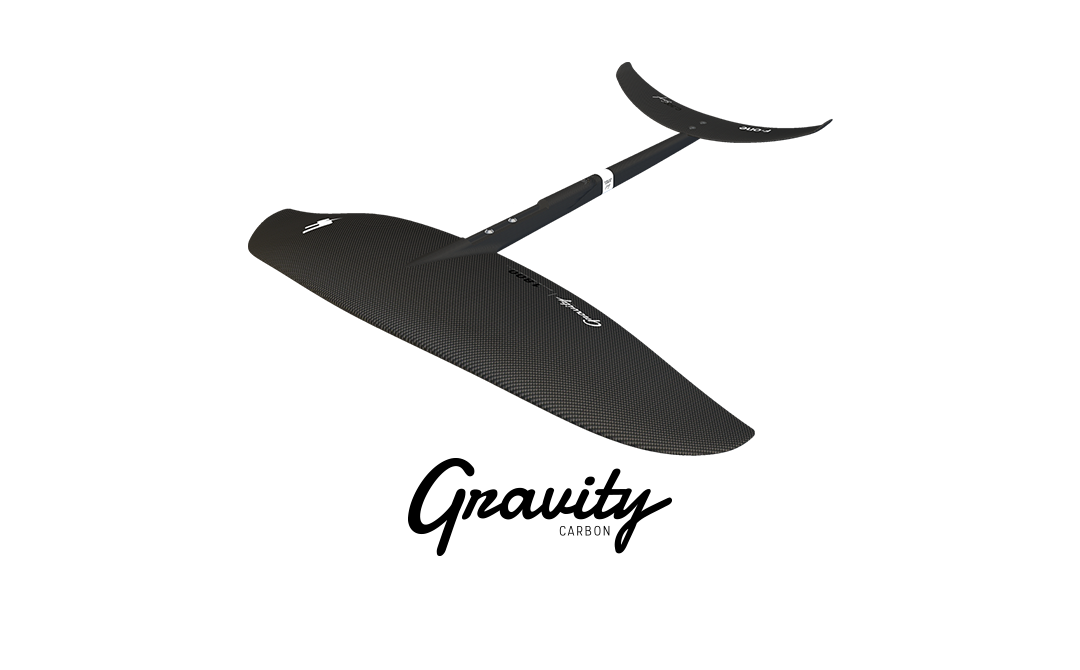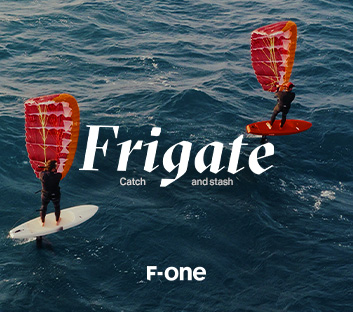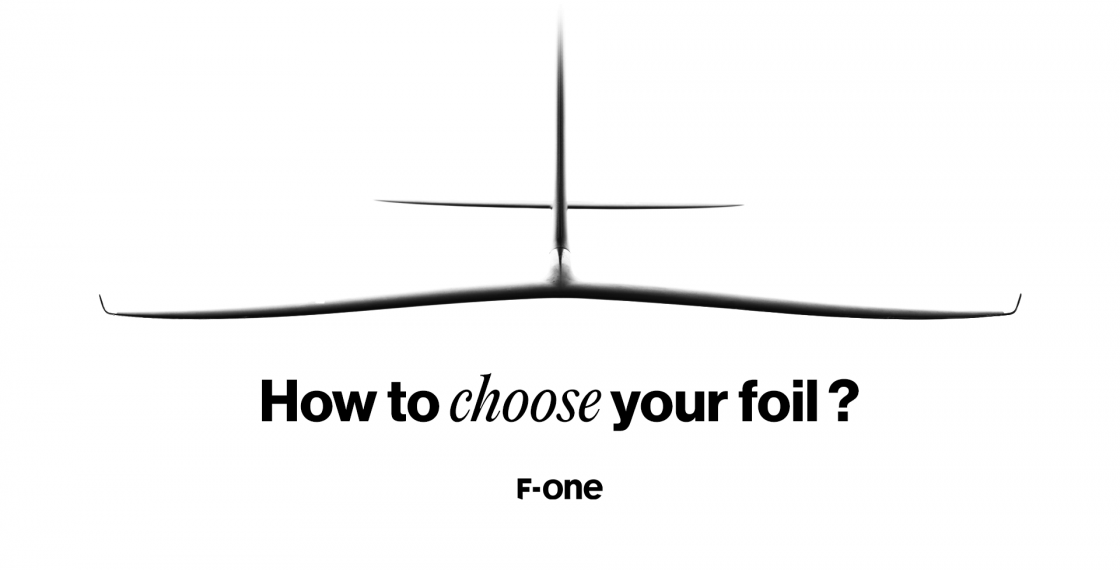
At F-ONE, there is no compromise on quality no matter the product. Our foil range is continuously expanding to remain the most comprehensive, modular, and accessible.
Our foil range follows logical stages of progression and clear steps that guide the customer according to their practice and level. These stages of progression, for example GRAVITY – PHANTOM – SEVEN SEAS – EAGLE, are invaluable for riders as they start and progress on equipment with similar balance. As the level of the customer increases, they can then choose more specific foils and focus on the discipline of their choice.
Here is our guide to help you choose your F-ONE foil. Keep in mind that your setup will vary depending on your skill level, your weight, the conditions, and your chosen program.
Aspect ratio
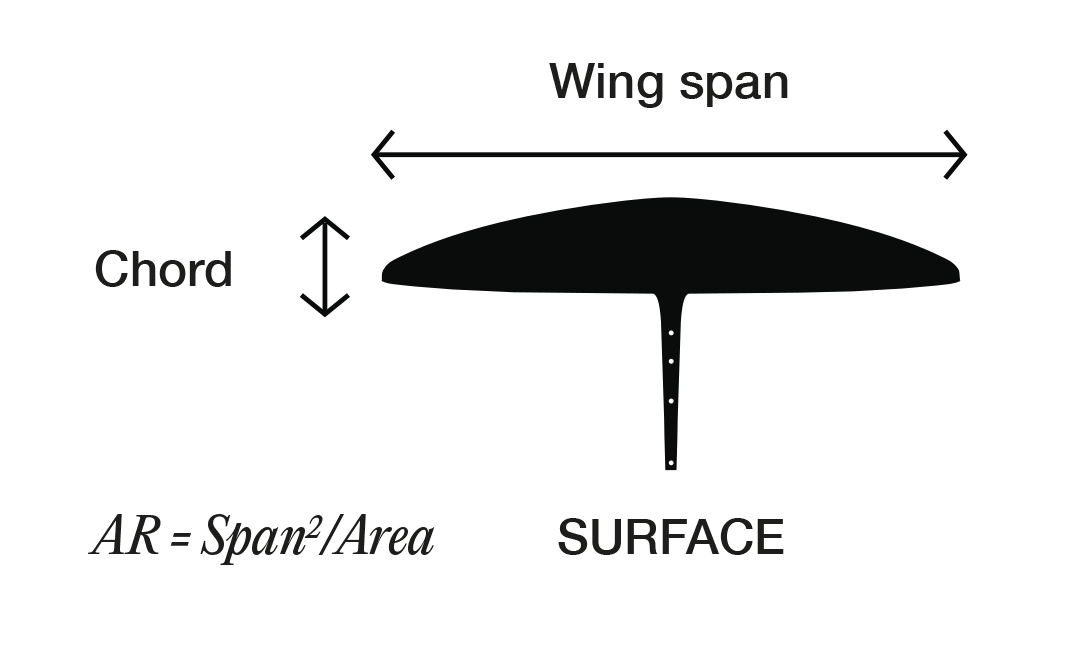
The Aspect Ratio (AR) is key to understanding how we constructed our range of foils, and it should be your first guide in choosing a front wing.
The AR is the ratio between surface area and wingspan.
Overall, foils with a low- to mid- AR will be a bit thicker and rounder. They are more stable, turn and pivot well, have plenty of lift, and will help you take-off easily at low speeds or in low wind conditions. Those with a high AR will be thinner and longer, and thus produce less induced drag. They are highly efficient and will provide a lot of glide and speed.
The higher the AR, the better the foil performs for experienced riders and the further it flies. However, it also requires more minimum speed to start planing and develop lift. The AR also influences the turning radius of each foil. With equal areas, a higher AR makes wider turns. Finally, there is also a link between the swell period and the AR of the foil. The longer the swell period, the more AR you need.
Range presentation & programs
In our foil range, we based everything on aspect ratio. As we started designing and trying out high aspect ratio foils, we discovered they opened new programs and new possibilities.
Overall, we have classified our range in four levels of AR to define programs for the foils:

An AR of 5 is the most accessible and is recommended to learn how to foil.
The most versatile and best performing is the AR 6.0. Its medium span guarantees maneuverability for surfing and accessible pumping.
When you switch to an AR of 7.0 or 8.0, you increase your maximum speed and will glide further. Some of our foils in that AR range also provide a fine balance between glide and maneuverability, which is perfect to surf and to push through the carve.
The AR of 9.0 and above is, in general, reserved for experienced riders. It offers incredible glide if you maintain sufficient speed and brings good maneuverability under 1000cm².
Ultimately, for wing and surf foiling, our range starts at an AR of 5.0 with the GRAVITY and goes all the way to 12.0 with the EAGLE X. For dock start and pump foil, we also offer the JAM with an AR of 10.
In kite foil, we have three different models with low- to mid-aspect foils that are perfectly adapted for high winds and high lift conditions.
Hydrofoil reviews
Front Wings – Wing foil, surf foil, and downwind
Our range of foils for wing foiling, surf foiling and downwinding has considerably expanded over the years.
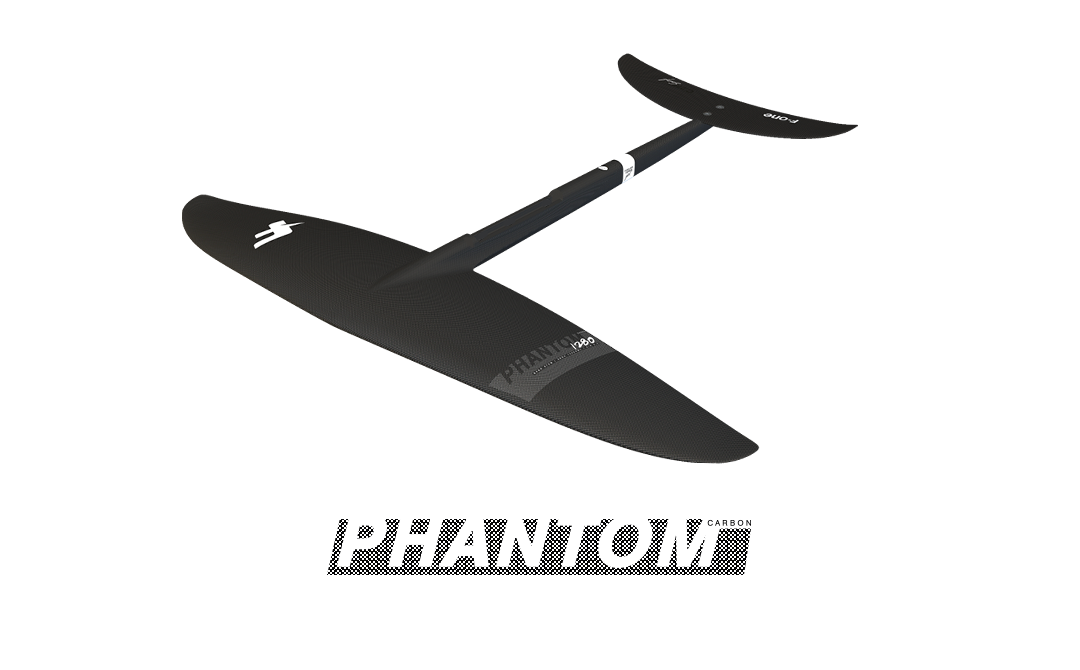
If you already have some experience and are looking for a great all-around foil, the versatile and must-have PHANTOM foil (AR 6.0) is for you. It is a fantastic foil that does everything well. Its medium span guarantees performance, maneuverability for surfing and efficient pumping. It is available in two different constructions: Carbon or FCT.
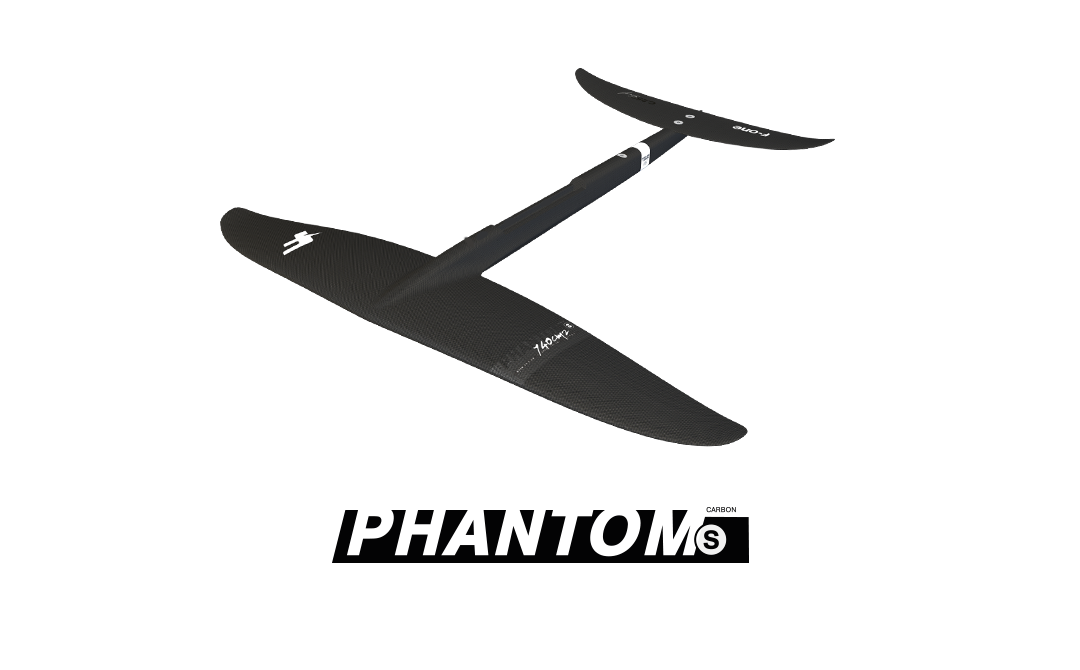
As you continue improving and want to change up your ride, a foil with a high AR will bring more speed, great carving capabilities, and more acceleration. The PHANTOM S, with an AR of 6.5 and surface areas below 1000cm², has a thinner profile than the regular PHANTOM to give you more speed and maneuverability. If you’re a surfer, then the handling, maneuverability, and carving abilities of this foil are made for you. Both PHANTOM and PHANTOM-S are also perfect for freestyle wing sessions.
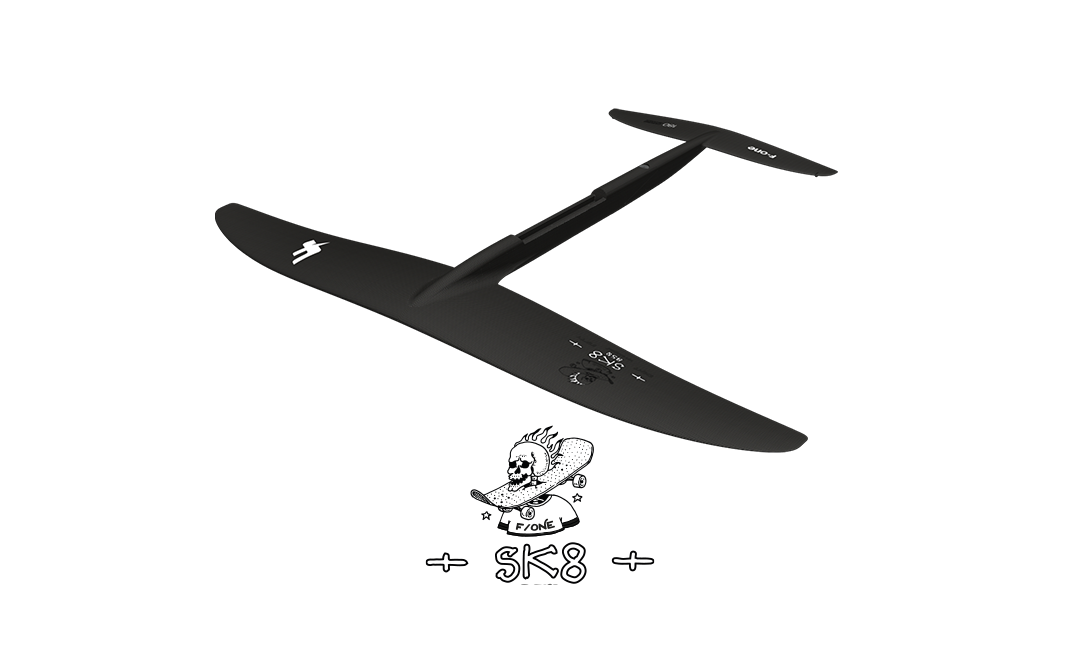
For those who really want to specialize in surf foiling, the SK8 has been designed to take your surf to the next level. With its specific outline, this foil lets you lay into turns with ease and speed, push through carve, engage into surf-style turns and stay in the pocket in total control.
The subtle balance of the lobe between maneuverability and glide allows to surf freely while maintaining efficient pumping. Its unique speed also makes it a perfect foil for surfing from offshore swells to the shorebreak with a wing.
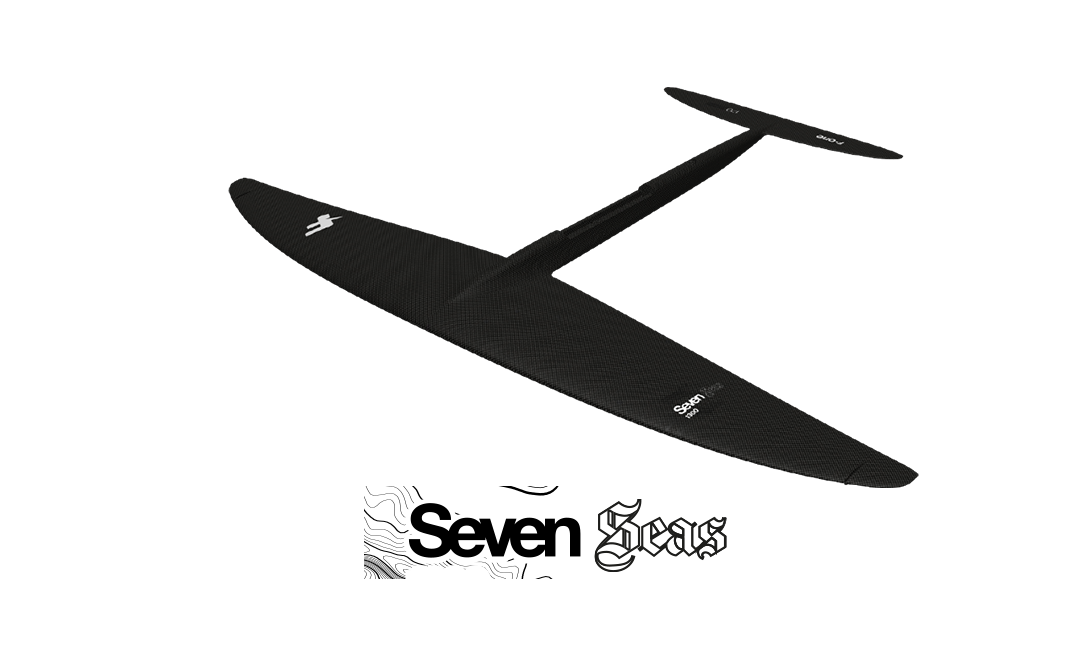
On the other hand, our range features options for those who can’t resist the call and want to go into downwinding. Thanks to its impressive performance/accessibility ratio, the SEVEN SEAS suits beginners and pros alike. This foil will help you move into open seas, and its AR of 8.0 makes it great for surfing the swell and get started in downwinding on small chops or in light winds. Its optimized design for minimal drag will also reduce the traction in your arms as you travel upwind with a wing.
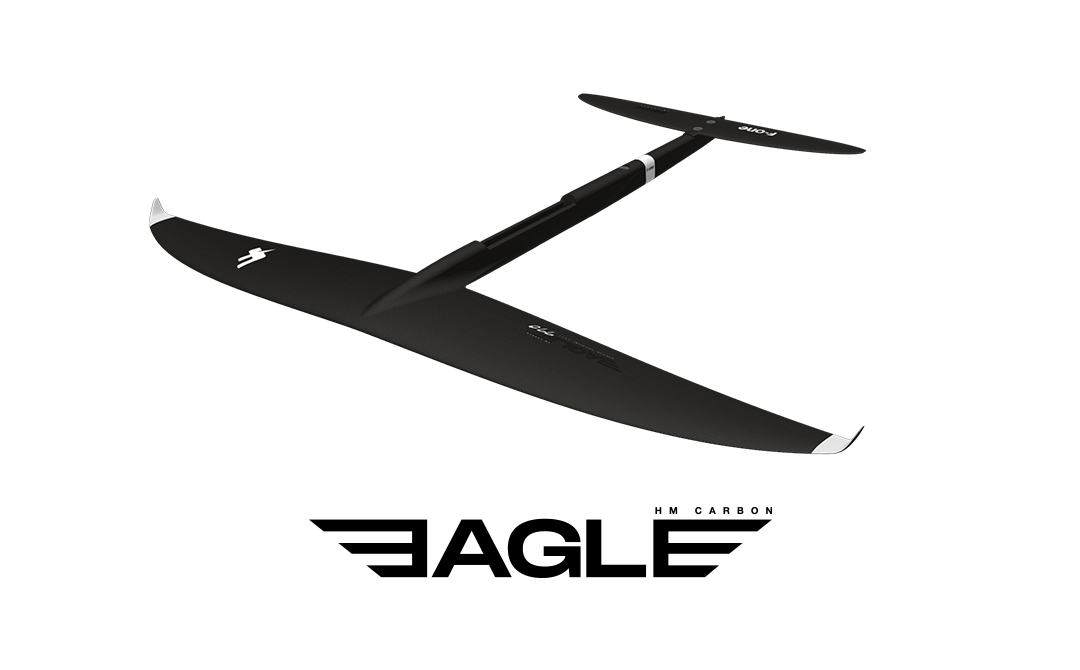
The EAGLE and its AR of 9.5 will let you fly incredibly far and fast. Its thin profile leads to minimal drag and brings a seemingly endless glide. Whether in freefly or downwind, you will be able to go much faster, further, and longer. Its stability and impressive control will let you fully focus on the entire experience.
The EAGLE will transform your session once you have the level to ride it as fast as it needs to enjoy its full potential. This foil is a completely new way of using the sea and the swell. Every chop is becoming more powerful; everything brings more sensation.
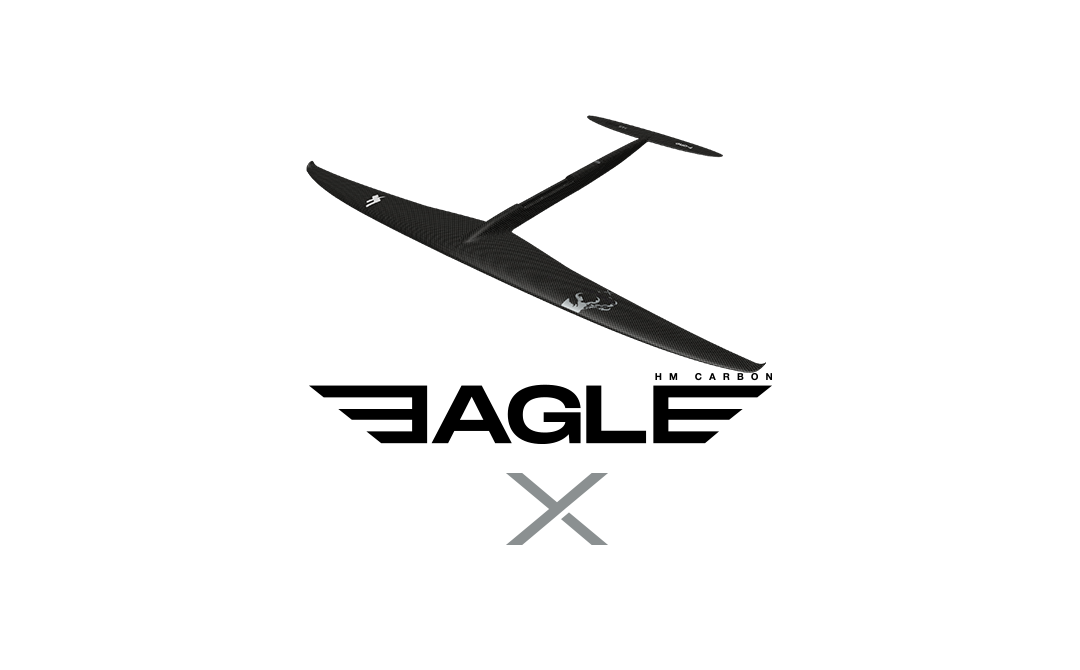
Finally, the EAGLE’s breathtaking speed has been multiplied with the new EAGLE X and its AR of 12. Reserved for advanced riders, it is a foil for all who want to push even further into the downwind world. The EAGLE X is optimized to reach the highest possible speeds while maintaining a very high average speed. Its glide allows you to fly without stalling, even if you make a small mistake.
Front Wings – Dockstart
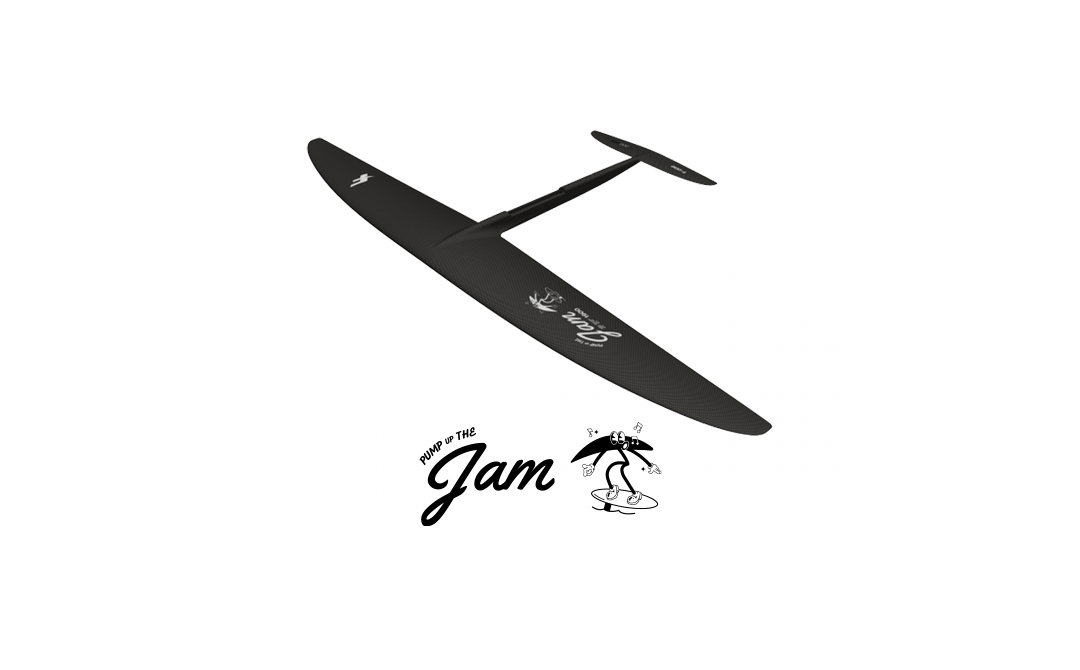
The JAM is made for dock start and pump foil. With its substantial surface area and AR of 10, this foil brings infinite glide, incredible lift, early and easy take-offs, and an astounding level of efficiency.
Front Wings – Kite Foil
Our kite foil range features three foils.
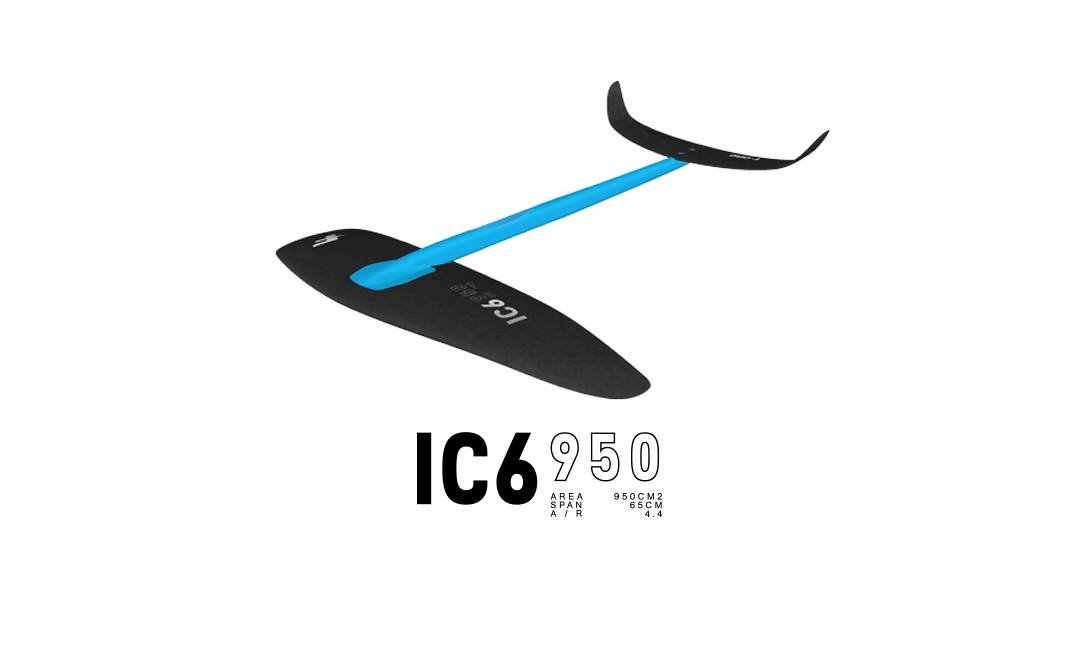
For beginners, the IC6 950 V.3 and its AR of 4.4 is intuitive, predictable, and very user-friendly. This versatile foil provides more lift, and offers an easy and progressive take-off. You always have complete control of your speed and path, and can make the most of your freeriding sessions while improving in full confidence.
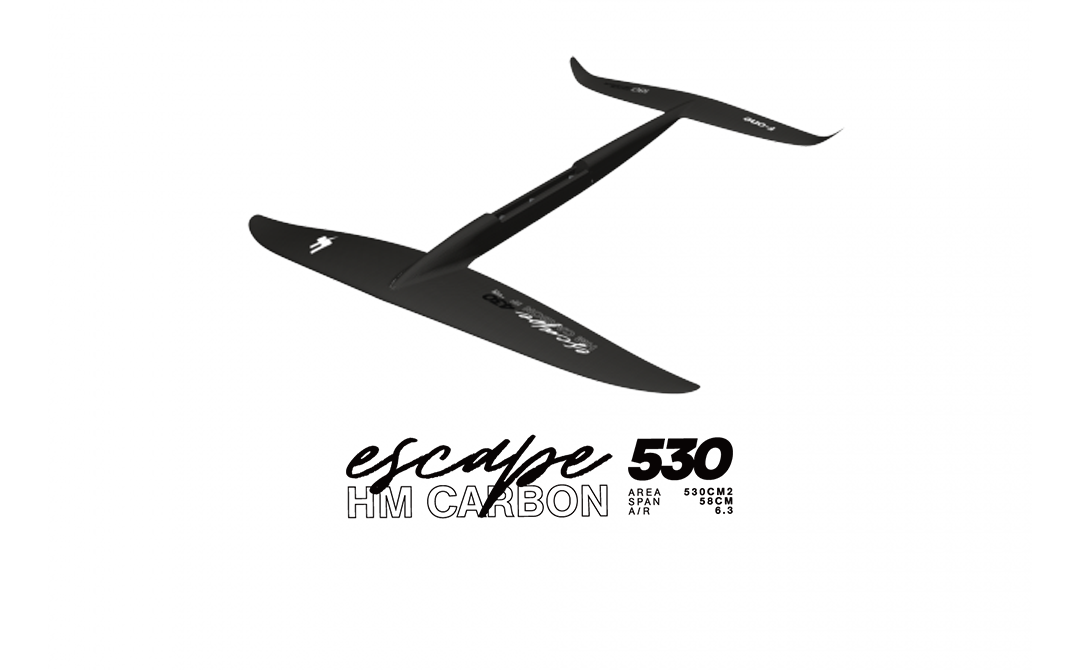
With its anhedral shape, the ESCAPE (AR 6.0) is a classic kite foil built for high-performance kiting and speed. Made to handle a lot of power, the ESCAPE is all about nailing new tricks and pushing hard, while providing stability when needed. It is a fantastic foil for choppy conditions, gusty winds, and the best choice for jumping. It can also be used by experienced riders to surf big waves.

Additionally, the smaller sizes of the SK8 (AR 8.0) are fantastic for kite foiling. This super playful foil carves extremely well, allowing you to push through the carve, every jibe and even nail 360° turns with total ease. The SK8 also makes it effortless to link tricks together without any gap between them; it fully holds its speed and glide through each maneuver before delivering a sound acceleration immediately afterwards.
The SK8 also handles tip breaches efficiently during turns; it is effortless to stay in control and to carve even harder. It is a kite foil that works best in flat waters or smooth, rolly swells, and is very efficient in light winds as well.
Carbon masts
The mast connects the plane (front wing + Monobloc Tail) to the board.
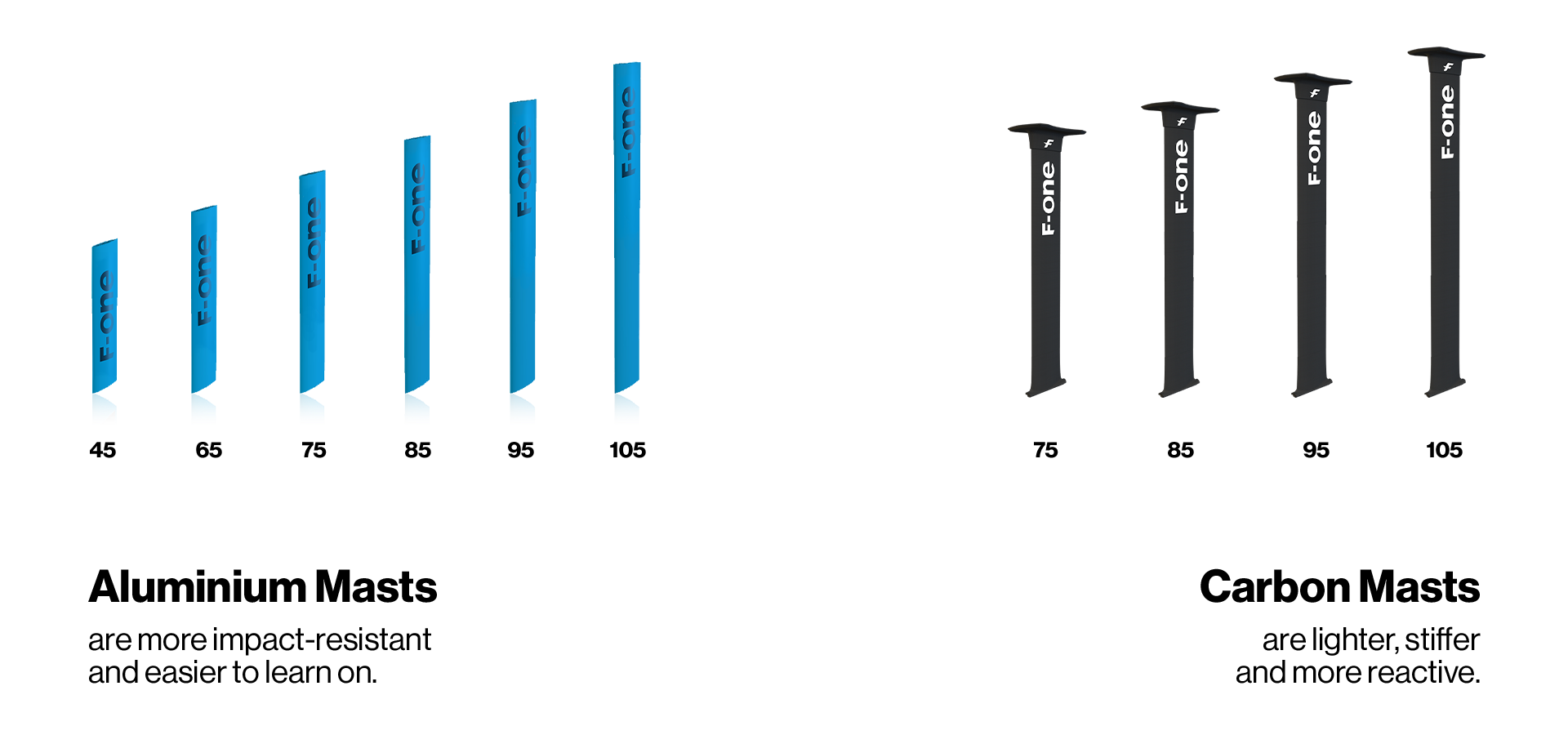
Our range includes two carbon masts (75-105cm) as well as an aluminum mast (45-95cm). Carbon masts are lighter, stiffer, and more reactive, while aluminum masts are more impact-resistant and easier to learn on.
It will also be easier to learn wing foil or kite foil on a shorter mast. The falls will be gentler, and you will feel more stable as you learn to get up and stay up. A shorter mast is also ideal for sessions in shallow waters.
A long mast offers more leverage and is good for choppy conditions. With a higher mast, you have more room to angle the foil and make aggressive turns in the waves without the foil breaching.
Read more on How to Choose Your F-ONE Carbon Mast
Construction & technologies
We offer three types of constructions on our foils: Carbon (pre-preg, High Modulus and Ultra High Modulus), FCT, and Injected Carbon.

![]()

All our carbon hydrofoils are made from pre-preg, which makes them incredibly strong and stiff. Some of our foils, like the EAGLE or the ESCAPE, have an added layup of High Modulus (HM) Carbon fiber that leads to even more rigidity in both bending and torsion while keeping enough comfort for any kind of practice.

The EAGLE X benefits from the Ultra High Modulus (UHM) layup, which takes the foil to the next level in terms of rigidity, precision, instant feedback, and control, giving you the edge you need for superior performance.

The Foil Compression Technology (FCT), available for our PHANTOM range, is an F-ONE innovation that offers impressive mechanical properties, making it particularly suited for foils subjected to high stresses and bending loads. FCT foils are built in fiberglass around a high-density foam core.
The wing is then covered by a thin and strong shield skin. This technology now also benefits from an additional carbon ply integrated into the construction, hence increasing the foil’s resistance and stiffness for even more control and stability. As you are riding, the difference between a carbon and FCT foil is barely noticeable. Both have the same shape and program. FCT foils do have a bit more flex, but the performance potential on the water is very much the same.

Finally, the Injected Carbon Technology is featured on our IC6 950 V.3 foil and consists of an injected polymer reinforced with carbon fibers. This technology makes these foils a lot more resistant and durable.
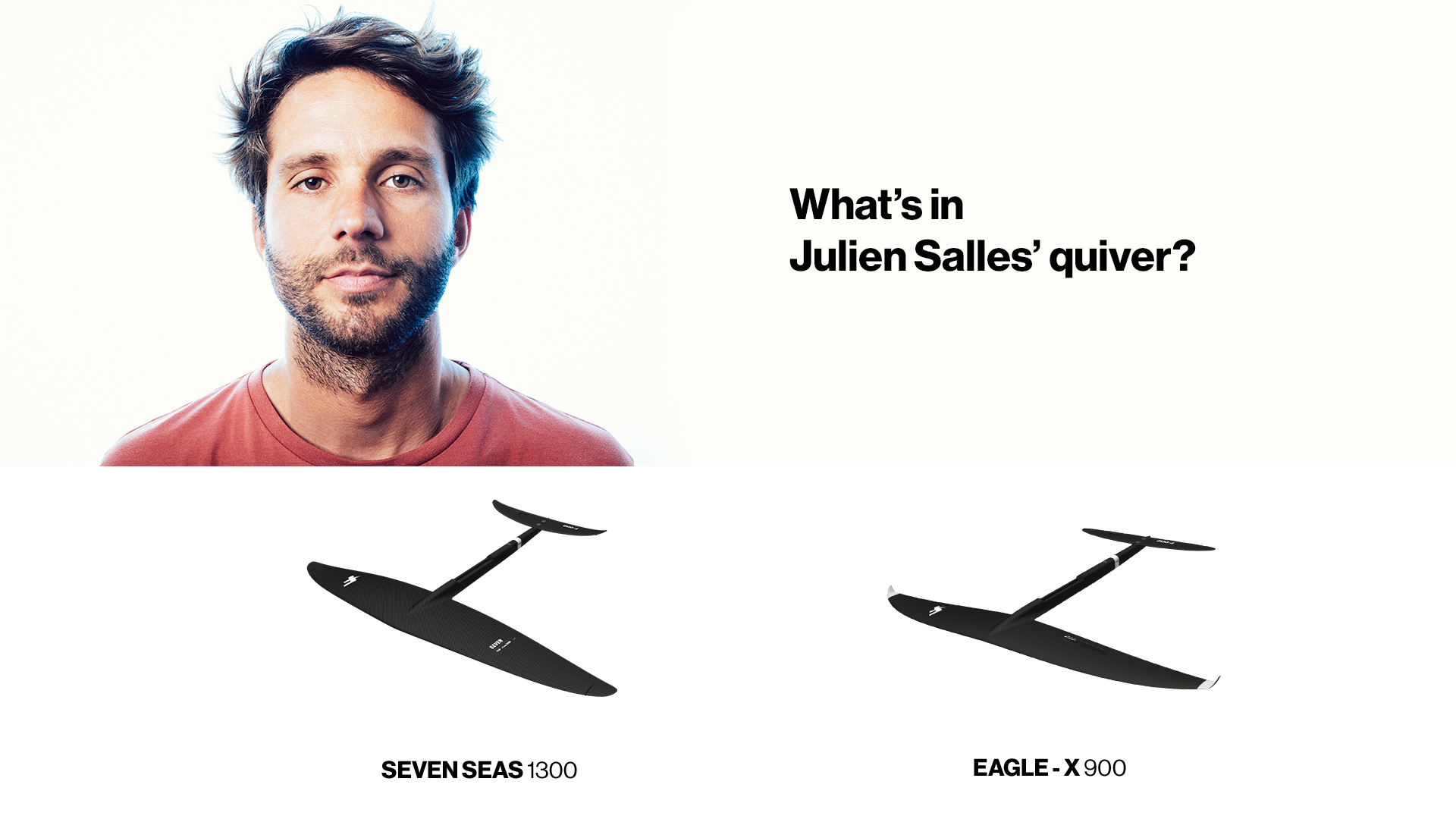
F-ONE Brand Manager Julien Salles recommends you build your quiver according to your skill set, the conditions, your weight, and what kind of riding you intend to do.
Julien keeps three foils in his quiver. For wing foiling in light winds, he uses the SEVEN SEAS 1300. Having a bigger surface area is essential for low-winds conditions, and the thin profile is great to maintain a good speed. This foil is also great to downwind in less than 25 knots or to SUP foil in small waves.
He loves to fly on the EAGLE X 900. Its stunning glide, high speed potential and comfort in the air make it a perfect foil to downwind in more than 25 knots, and to wing foil in choppy waters.
Finally, Julien always has a SK8 850 in his board bag so that, when the conditions allow, he can push through the carve and draw big lines in surf foil, or comfortably wing foil in the waves.
Stay tuned for more.
![]()
